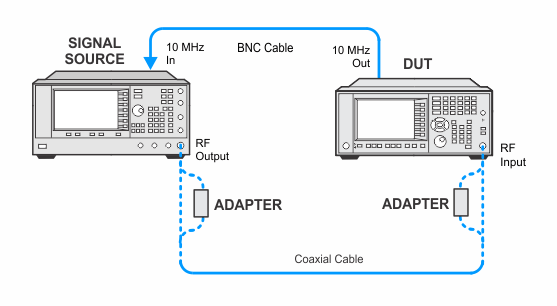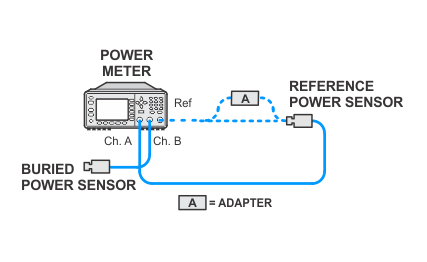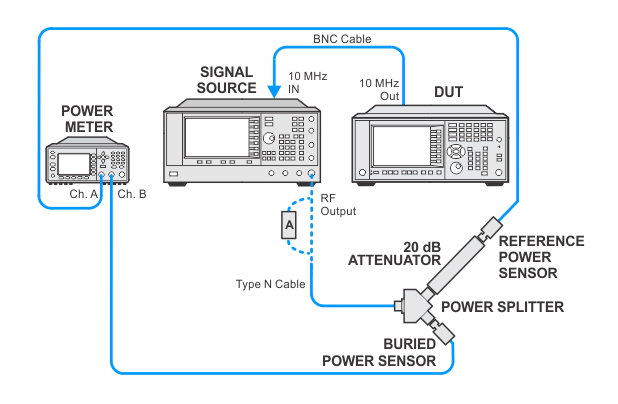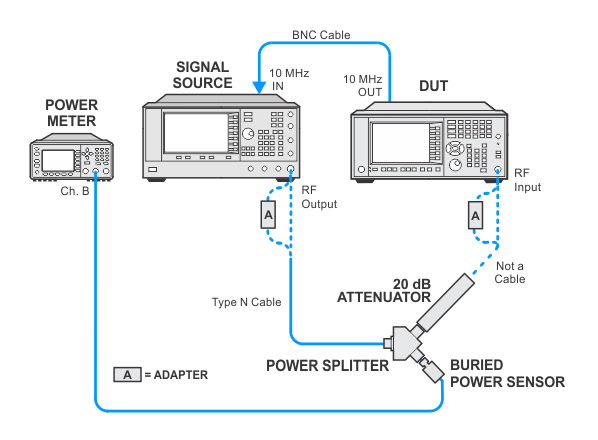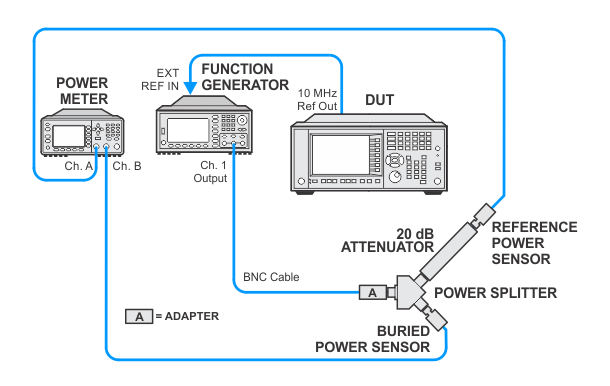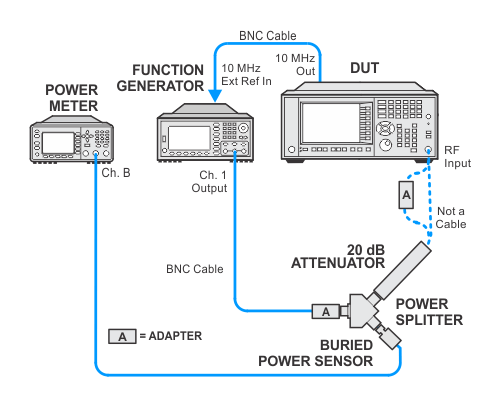
In the following setups, cables are designated as solid lines and direct connections are designated as dashed lines.
NFA — N8973B/74B/75B/76B
In this adjustment flatness corrections are turned off, and amplitude error versus frequency is measured from 100 kHz to 3.6 GHz. The data is then normalized to 50 MHz to generate corrections relative to 50 MHz. The data is then stored in the analyzer memory.
The flatness correction points from 50 MHz to 3.60 GHz are determined by the Adaptive Flatness process. The Adaptive Flatness process manipulates the uncorrected flatness response to generate a custom list of frequency correction points for each instrument. This procedure assumes the adaptive flatness correction points have been created. Below 50 MHz the correction frequencies are fixed at:
|
|
|
|
|
|
|
|
|
|
|
|
|
|
|
|
Click here for troubleshooting.
|
Test Equipment |
Recommended Model Number |
|---|---|
|
RF Signal Generator |
PSG Models |
|
Function Generator |
33622A |
|
Power Meter |
N1914B |
|
RF Power Sensor |
N8482A |
|
RF Power Splitter |
11667A |
|
20 dB Fixed Attenuator |
8491A Option 020 |
|
Power Sensor Cable |
11730A |
|
BNC Cable (2 required) |
8120-1840 |
|
Type-N Cable |
11500C |
|
BNC (f) to SMA (m) adapter |
83059B |
|
Type-N (m) to Type-N (m) adapter |
1250-1200 |
|
Type-N (m) to BNC (f) adapter |
1250-1476 |
|
BNC Tee (f-m-f) |
1250-0781 |
|
3.5 mm (f) to Type-N (f) adapter |
1250-1745 |
|
2.4 mm (f) to Type-N (f) adapter |
11903B |
|
|
In the following setups, cables are designated as solid lines and direct connections are designated as dashed lines. |
